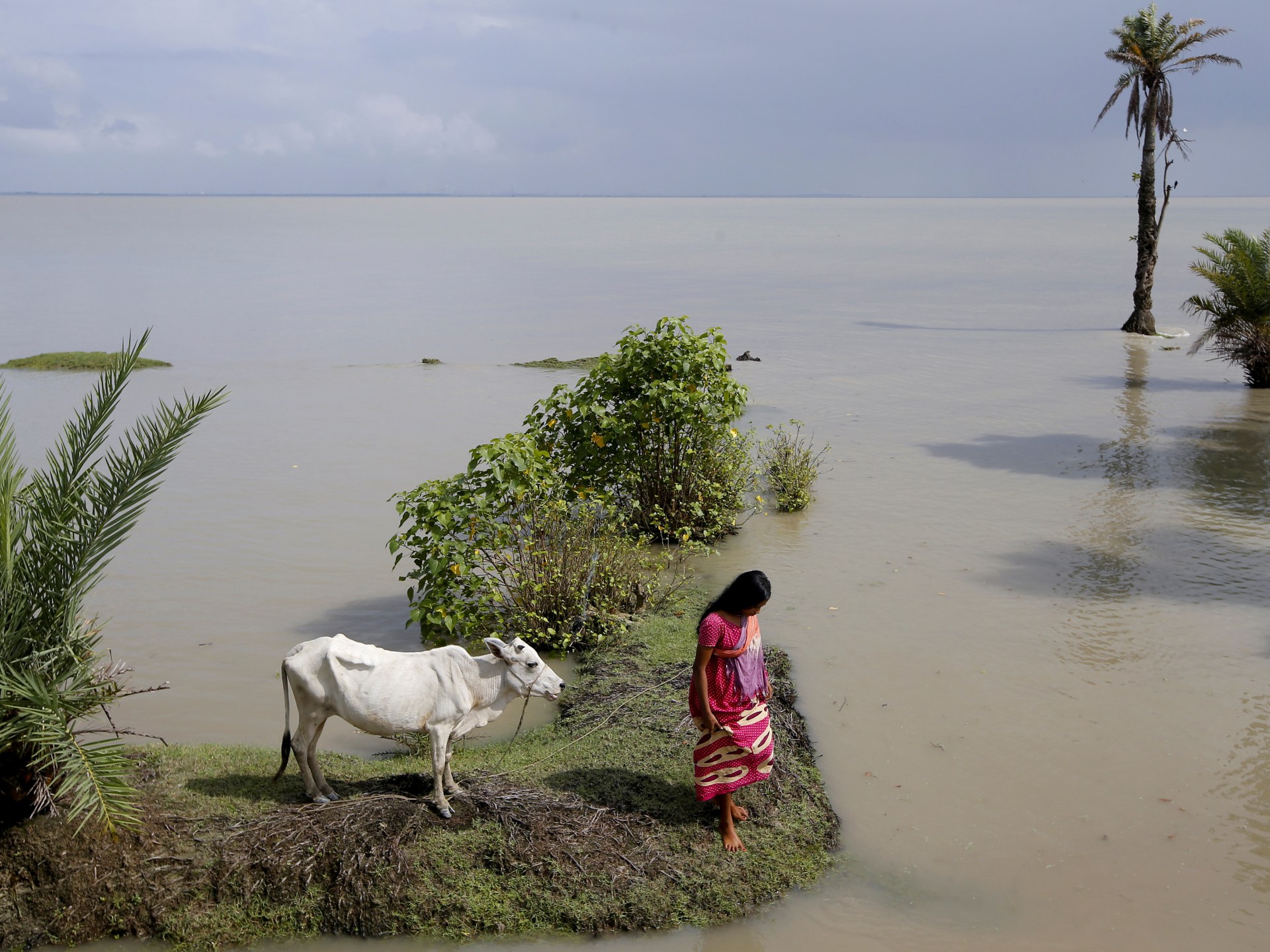Protecting climate refugees requires a legal definition | Climate Crisis
During the UN Climate Conference (COP28) in Dubai last year, the terms “climate migrants” and “climate refugees” echoed loudly across meeting rooms and panels. These labels were passionately used by high-ranking UN officials, external stakeholders, scholars and activists grappling with the consequences of climate change.
During a panel discussion, I emphasised that these terms hold no legal weight and inquired about the need for specific legal protections for those affected by climate-induced displacement. My question was quickly shut down by the panel organisers, surprising attendees.
My thoughts ran quickly to the many people displaced by climate change I knew: the Ecuadoran refugees who arrived in New York, seeking sanctuary from environmental turmoil at home, the women in the Sundarban islands of West Bengal facing climate-driven disasters but unable to relocate, and many of my neighbours in Brooklyn, who have experienced recurrent home destruction due to heavy rainfall. All of them do not have any form of international legal protection that can guarantee them dignified life.
Sadly, the dismissive response at COP28 reflects a larger pattern of denial. Legally defining “climate refugees” has been fiercely debated globally on many accounts. Critics often argue that attributing migration solely to climate change oversimplifies a complex web of influences on human mobility. They claim that these terms diminish the role of institutional and human responses, and social conditions in transforming environmental stressors into crises.
Thus, this complexity makes it impossible to distinguish between climate refugees and economic migrants. Ironically, this argument actually persists alongside predictions that estimate a possible 1.2 billion people (PDF) might be displaced by 2050 due to climate-change-related hazards.
After COP28, this recurring chorus echoed in my mind: “No legal changes are needed; we have it covered with UN initiatives like the 2018 Global Compact for Safe, Orderly, and Regular Migration”, which commits (PDF) parties to creating “conducive political, economic, social and environmental conditions for people to lead peaceful, productive and sustainable lives in their own country and to fulfil their personal aspiration”.
Under its second objective, the compact emphasises the need for cohesive approaches in handling migration challenges amid both sudden and gradual natural disasters, urging the integration of displacement concerns into disaster preparedness strategies.
Let us pause for a moment. While these policies project preparedness, they fall remarkably short in offering robust legal recognition and protections to those facing climate crises and the need to move – including the groups and individuals in the examples I shared earlier.
This absence of a specific legally defined framework poses hurdles for individuals seeking migration status due to climate change impacts.
Calls to establish international legal frameworks tailored to address migration needs arising from environmental factors have been equated with opening Pandora’s box. Some suggest this could challenge the 1951 Refugee Convention, which defines the term “refugee” strictly along the lines of “fear of being persecuted for reasons of race, religion, nationality, membership of a particular social group or political opinion.”
They worry an unravelling that would add climate and environmental movement protection might destabilise our already fragile global commitments to upholding all refugee rights. They warn that this opening might overshadow the plight of those fleeing persecution and conflicts.
My sympathy for this concern runs deep. I agree that this critique deserves careful consideration. But here is the crux: The urgency to address climate-induced humanitarian crises shouldn’t be paralysed by the complexities of diplomacy or the fear of potential aftershocks.
Let us be clear: The pains of any form of persecution, and seeking refuge from conflicts demand immediate action. But we should not allow these complexities to shroud the urgency of rethinking international agreements.
International agreements are reviewed all the time, so doing so regarding climate change realities would be no different. Think about the 1992 UN Framework Convention on Climate Change – the first legally binding treaty signed by 154 countries committing to reduce atmospheric concentrations of greenhouse gases to “prevent dangerous anthropogenic interference with the climate system”.
Its outcome has been far from satisfactory, but it placed us on track to formulating the Paris Agreement in 2015, and finding ways to make common progress in addressing climate change.
Similarly, when it comes to a legal framework for climate refugees, maybe we will not negotiate binding conventions today, maybe not tomorrow. But we can start thinking – or rethinking – them now.
The time has come to envision a sensible and sustainable course towards protection for vulnerable populations grappling with the effects of climate change and environmental disasters, while safeguarding existing refugee statuses. This calls for a collective effort, uniting those directly affected by climate change, alongside scholars, activists, international organisations, and government representatives, to rethink, conceptually and legally, the implications of creating a radically different approach.
Being mindful of the multilayered challenges of slow-onset climate change could help develop a spectrum of strategies, intertwining migration management, refugee protection, and environmental solutions for those who stay and/or return. Our overarching aim should be to prevent the heartbreaking displacement of people from their homes involuntarily, while also ensuring the human rights of those who have no choice but to leave or are already displaced.
These strategies align with previous agreements, but they also call upon us to collectively reimagine and address the evolving needs and diverse vulnerabilities of both humanity and the planet.
Human rights-based approaches and explicit legal frameworks are essential for enforcing claims at all levels of governance and providing access to sustainable environmental justice. Fear cannot lead our decisions. Upholding human rights should be the compass guiding us through this intricate political and climate landscape.
The views expressed in this article are the author’s own and do not necessarily reflect Al Jazeera’s editorial stance.
Check out our Latest News and Follow us at Facebook
Original Source






